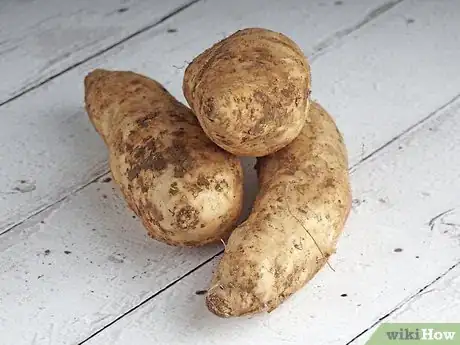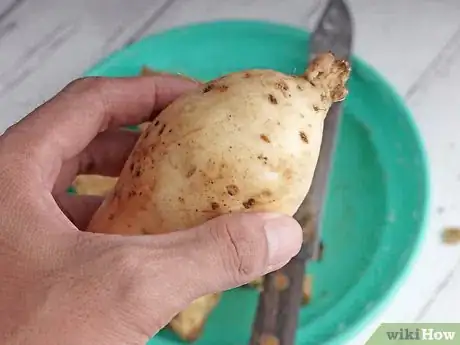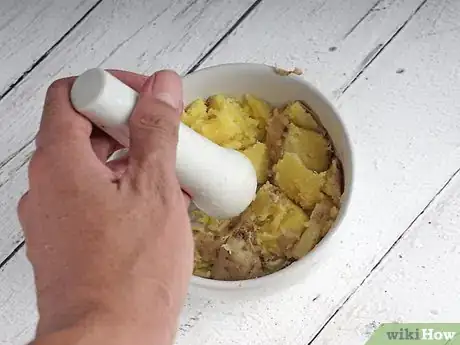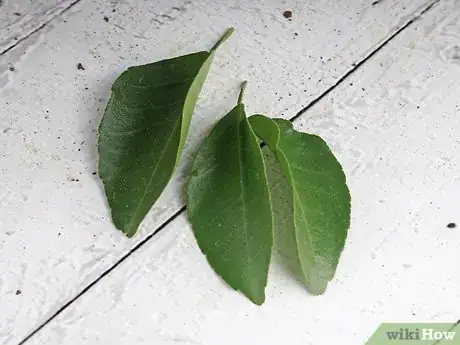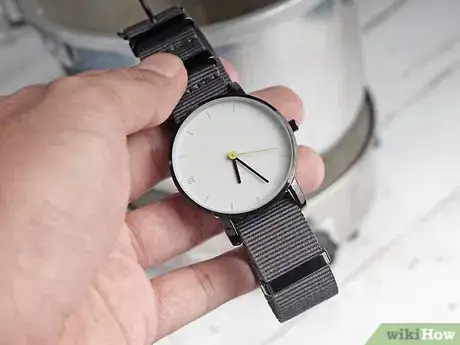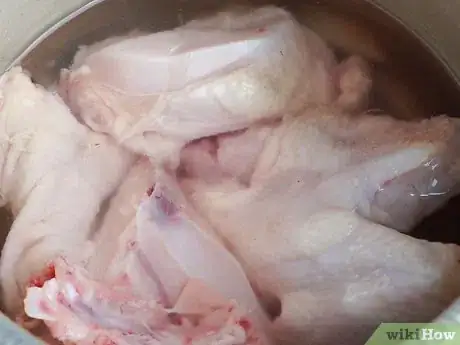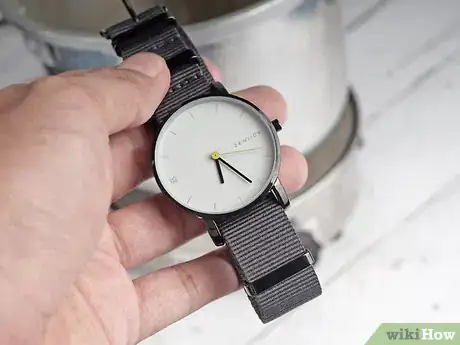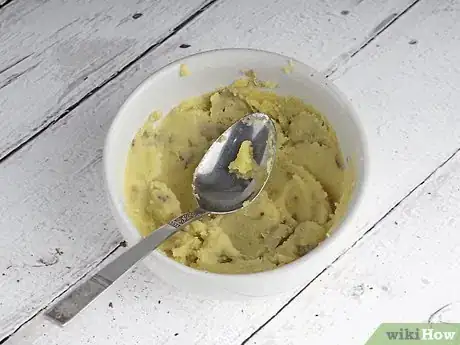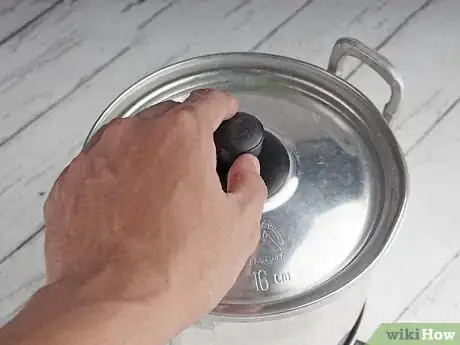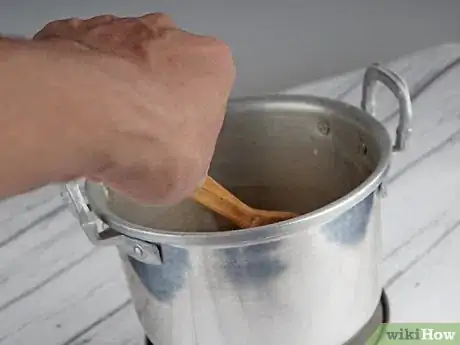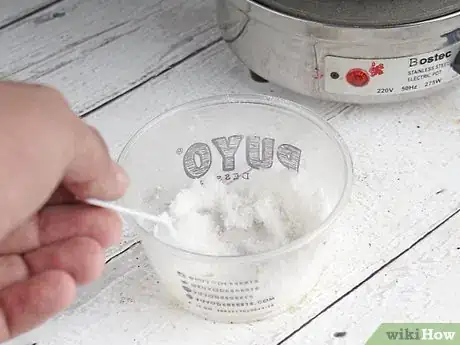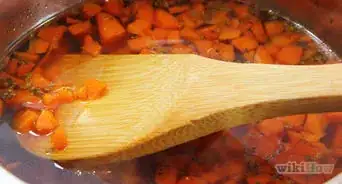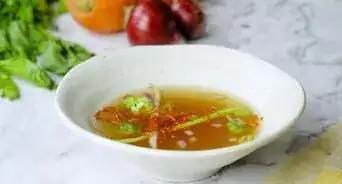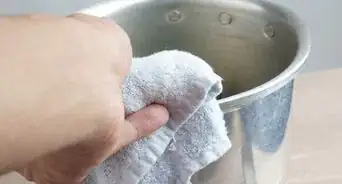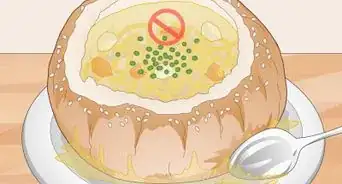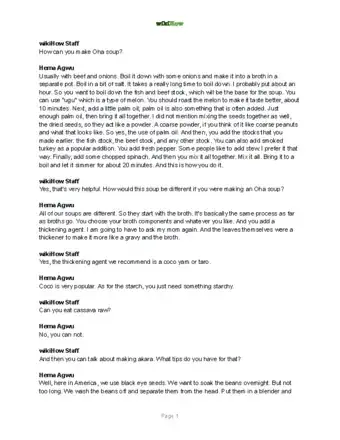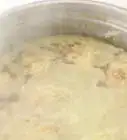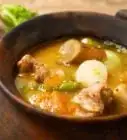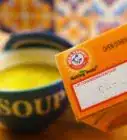This article was co-authored by Hema Agwu and by wikiHow staff writer, Jessica Gibson. Hema Agwu, known as “The Suya Guy,” is a Nigerian Chef and the Co-Founder of Brooklyn Suya. A self-taught chef, he specializes in creating the perfect suya, a traditional Nigerian spice blend. Chef Agwu expanded his palette with flavors from Morocco, Eritrea, and the U.S. Over his career, he’s been featured in several publications and on The Cooking Channel’s The Spice of Life.
This article has been viewed 38,240 times.
If you've gotten your hands on fresh Oha leaves, make a pot of Oha soup. This Nigerian specialty is thickened with Cocoyam paste and seasoned with smoked fish, dried shrimp, and your favorite meats. Cook the soup until it's as thick as you like and then stir in palm oil and oha leaves. Serve the soup with fufu and enjoy!
Ingredients
- 1 bunch oha leaves
- 1 smoked fish, deboned
- 8 raw cocoyam tubers (taro)
- 1 teaspoon (9.5 g) ogiri or fermented locust bean seasoning (Iru)
- 2 tablespoon (16 g) ground crayfish
- 2 1/4 pounds (1 kg) meat pieces (beef steak or roast, goat meat, or turkey)
- 1 tablespoon (15 ml) palm oil
- 8 1/2 cups (2 liters) water
- 1 stockfish (hake or cod) cut into 4 pieces
- 1 cup (226 g) dried shrimp (Oporo)
- 2 stock cubes
- Salt to taste
- 1 tablespoon (6 g) dried red bell pepper, ground
Makes 4 servings
Steps
Pounding the Cocoyam and Tearing the Oha Leaves
-
1Boil the cocoyam tubers for 10 to 20 minutes. Rinse 8 cocoyam tubers to remove any dirt or sand and put them into a pot. Pour in enough water to completely cover the cocoyam and turn the burner to high heat. Boil the cocoyam for 10 to 20 minutes so they become soft.
- To test if the cocoyam have boiled long enough, insert a fork into one of them. The fork should easily slide in and out if the cocoyam is cooked enough.
-
2Cool and peel the cocoyam. Drain the water from the pot and let the cocoyam cool until you can comfortably pick them up. Use a vegetable peeler or paring knife to peel each of the cocoyam. Discard the peels.
- Depending on how thick cocoyam skin is, you may be able to rub and pull off the peels using your fingers.
Advertisement -
3Pound the cocoyam into a smooth paste. Transfer the cooked cocoyam to a mortar. Take the pestle and pound the cocoyam until it's a thick paste with very few lumps. Set the cocoyam paste aside.
- The cocoyam paste will thicken the soup once it's almost finished cooking.
-
4Rinse and pull the oha leaves from the stems. Take 1 bunch of oha leaves and rinse them under cool water to remove any dirt or debris. Use your fingers to pull the leaves off of the stems. Discard the stems.
-
5Tear the oha leaves into small pieces. Use your fingertips to tear each oha leaf into 3 small pieces. Set the small pieces of oha aside.
Cooking the Fish and Meat
-
1Cook the stockfish for 1 hour over medium-low heat. Place 1 stockfish that's been cut into 4 pieces into a pot. Pour enough water to completely cover the fish. Cover the pot and cook the stockfish over medium-low heat for 1 hour to soften the fish. Drain the water from the pot and turn off the burner.[1]
-
2Choose and cut the meat for the soup. You can use a mixture of your favorite meats as long as you use 2 1/4 pounds (1 kg). For example, pick large pieces of beef, goat meat, or turkey. Cut the meat into large chunks that are about 3-inches (7.5-cm) in size.[2]
-
3Boil the meat with water for 2 to 3 hours. Place the meat into a pot and pour in 8 1/2 cups (2 liters) of water. Put the lid on the pot and boil the meat until it's soft and completely cooked. Depending on what types of meat you used, this will take 2 to 3 hours.[3]
-
4Stir in the smoked fish, dried shrimp, seasonings, and palm oil. Remove the lid and stir in 1 deboned smoked fish, 1 cup (226 g) of dried shrimp, 1 tablespoon (6 g) of ground dried red bell pepper, 1 teaspoon (9.5 g) of ogiri or fermented locust bean seasoning, 2 stock cubes, and 2 tablespoon (16 g) of ground crayfish.[4]
Heating the Soup
-
1Simmer the soup for 10 minutes. Reduce the heat to medium so the liquid bubbles gently. Cook the soup and stir it occasionally so the seasonings dissolve and the soup doesn't stick to the pot.
-
2Stir in the cocoyam paste and palm oil. Add the cocoyam paste to the pot in spoonfuls so it dissolves before you add more. Pour in 1 tablespoon (15 ml) of palm oil and stir it to color the soup.
-
3Cover and boil the soup until it's as thick as you want it. Turn the heat to medium-high so the liquid boils. Cook the soup until the cocoyam paste thickens the soup as much as you like.
- If the soup thickens too much and you want thinner soup, stir in water to thin it out.
-
4Stir in the oha leaves and cook the soup for 5 minutes. Remove the lid and stir in the pieces of oha leaves. Put the lid back on the pot and cook the soup over medium-high heat for 5 minutes to soften the leaves.
-
5Adjust the salt and serve the soup. Taste the soup and add salt according to your taste. Ladle the soup into 4 serving bowls and serve it with cassava fufu on the side. Store the leftover oha soup in an airtight container in the refrigerator for 3 to 4 days.[5]
Things You'll Need
- Pot
- Vegetable peeler
- Knife and cutting board
- Measuring cups and spoons
- Mortar and pestle
- Large pots with lids
- Spoon
- Serving bowls
- Ladle
